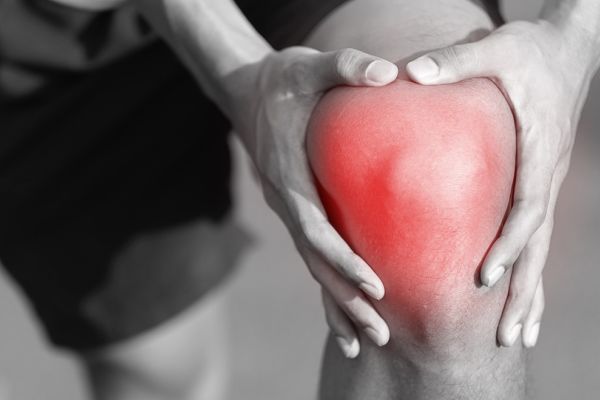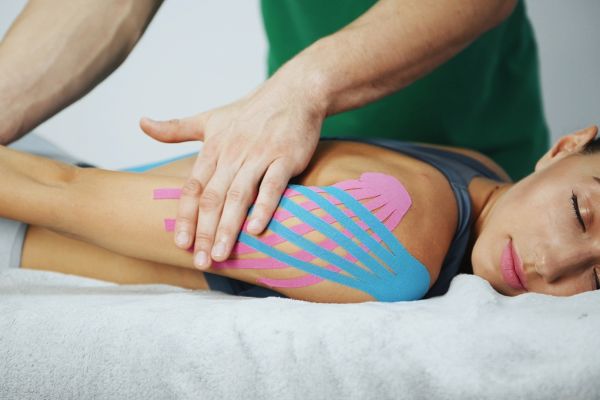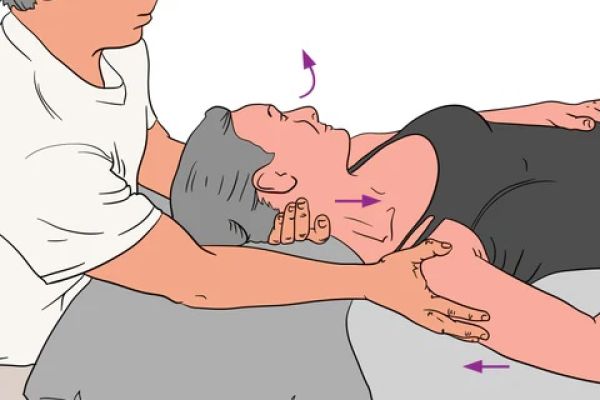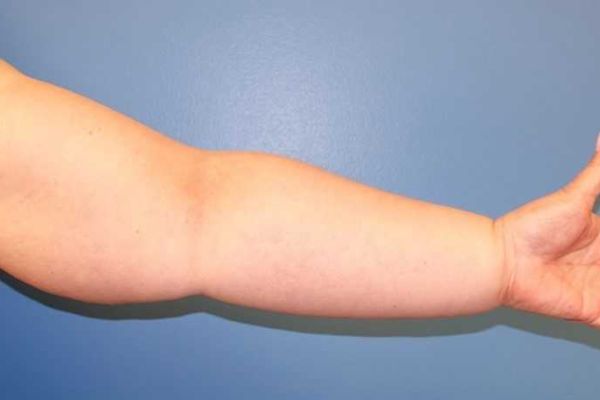Lymphatic System - Anatomy
The lymphatic system is a nexus, or series, of vessels similar to that of the circulatory system—the branching vessels move vital bodily fluid throughout the tissues and organs of the body.
When functioning optimally, the lymphatic system defends against infection and helps maintain homeostasis, which is the body's way of managing a continual internal environment when dealing with changes. To sustain homeostasis, the body has two types of immunity—innate immunity and adaptive immunity.
Innate immunity consists of alert immune cells ready to fight microbes, and the body’s adaptive immunity gets called into action when the innate immune system is overwhelmed. When the adaptive immune system encounters a pathogen, it remembers it to prevent future encounters of the same bacteria and viruses from becoming problematic.
Examine the role the lymphatic system, the backbone of the immune system, to obtain a greater understanding of how the immune system keeps the body stable and well.
Components of the Lymphatic System
Lymph vessels and lymph nodes are the transport system for extracellular fluid that doesn’t return with the blood through the venous circulation.
Extracellular fluid is the fluid that flows between cells in the interstitial spaces of bodily tissues—it contains white blood cells (WBCs), lipids (fats), proteins, salts, and water.
The interstitial spaces are the narrow areas between tissues and organs.
Once the interstitial fluid is within the lymph vessels, it is called lymph. The composition of lymph resembles blood plasma, except it contains zero red blood cells (RBCs). Because lymph is from interstitial fluid the composition changes as the surrounding tissues and blood exchange substances.
Lymph has a transparent straw color unless it is transporting lipids, then it takes on a milky appearance.
Why Does the Body Need a Lymphatic System?
The lymphatic system works around-the-clock to dispose of the waste from other body systems—it’s the body’s clean-up crew.
A healthy lymphatic system provides several functions for the body:
- Drains. The lymphatic system collects the surplus of fluid encompassing the tissues and organs and drains it back into the bloodstream.
- Filters lymph. WBCs attack detected microbes, such as viruses or bacteria, found in the lymph as it filters through the lymph nodes.
- Filters Blood. The spleen removes and replaces old RBCs with new RBCs from the bone marrow.
- Removes toxins. The lymphatic system helps remove byproducts, toxins, and impurities through bowel movements, perspiration or sweating, urine, and the breath.
- Fights infection. Illness-causing bacteria, viruses, fungi, and other germs cause the lymphatic system to make lymphocytes, specific WBCs, that produce antibodies. The antibodies are a crucial part of the immune system, they counteract and defend against these invaders.
- Absorbs fats. The villi, finger-like projections, lining the intestinal mucosa transport fat and fat-soluble vitamins to the bloodstream through a lymphatic capillary called a lacteal.
How do Lymphatic Vessels Move Fluid?
Unlike the circulatory system, the lymphatic system does not have a pump. Vertical movement of the lymph relies on smooth muscle and the contraction of skeletal muscles. Smooth muscle fibers are not under voluntary control.
Lymph Has a One-way Journey
The lymph travels from the interstitial spaces, through lymph capillaries, then through larger lymphatic vessels to lymph nodes.
Once the nodes clean the lymph with lymphocytes it is transported to the left or the right subclavian vein—located at the base of the neck—where it returns to the circulatory system.
Lymphatic Capillaries
Lymph from the extracellular space enters the lymphatic system through capillaries, small vessels secured to surrounding tissue by an anchoring slender fiber called a filament.
Two types of capillaries exist:
- Superficial capillaries – found near the skin or just below the skin.
- Deep-lymphatic capillaries – located viscerally, around most organs.
Lymphatic Vessels
The lymphatic capillaries progressively form a mesh of tubes deep in the body. As capillaries become deeper and larger they become lymphatic vessels, or lymphangions—they are located near major veins of the circulatory system.
Similar to blood veins, the lymphangions have valves to prevent backward flow of fluid.
Smooth muscle lines the wall of the lymphangions to aid in the upward movement of lymph.
The movement of lymph classifies the vessel:
- Afferent lymph vessels – moves unfiltered lymph through a node to filter the fluid and remove waste.
- Efferent lymphatic vessels – moves filtered lymph from the node to the circulatory system.
Drainage Areas
Lymph fluid can build up in the body, causing edema or swelling, if the lymphatic system does not drain properly.
Lymph ducts are lymphatic vessels that empty lymph into the subclavian veins.
Two lymph ducts include:
- Right lymphatic duct
- Larger thoracic duct (thorax – between the neck and the abdomen)
Drainage for the lymphatic system separates into two areas:
- Right drainage area – drains the right arm and right portion of the chest.
- Left drainage area – removes both lower limbs, the trunk, the left arm, and the upper left of the chest.
These areas do not drain equally—the left drainage area removes more fluid than the right.
The Lymphatic System’s Role in Immunity
Lymphoid Organs
The lymphoid organs shape the body’s immune system; they attack invading pathogens and defend against the spread of cancer. The lymphoid organs are classified based on lymphocyte development—primary, secondary, and tertiary.
Other leukocytes, WBCs, are also present; however, lymphocytes have the highest number present within the organ regardless of classification.
Primary Lymphoid Organs
The primary lymphoid organs may also be called central lymphoid organs. The bone marrow and thymus spawn WBCs from immature progenitor cells, cells that can differentiate into a particular cell type.
Bone Marrow
The bone marrow is a fatty soft tissue within the medullary cavity of the bone that produces blood cells and platelets. Medulla means the innermost part; therefore, the medullary cavity is the innermost part of the bone.
Bone marrow is also a producer of mesenchymal cells, stem cells that are responsible for the development of lymphatic and circulatory system cells, in the body. Stem cells are undifferentiated cells that can give rise to an indefinite amount of cells of the same type.
The most common areas of stem cell production in the adult body are in the iliac crest (hip) and calcaneus (heel).
Thymus
The thymus is a T-lymphocyte, or T-cell, forming organ of the immune system and yields daily allowances of T cells that fight infection and assist the immune system in maintaining proper balance and function.
The thymus has two identical lobes—one anterior to the heart and the second posterior to the sternum.
The thymus is active in childhood and begins to atrophy, or shrink, during puberty; however, the thymus still produces T cells for the life of the individual.
Secondary Lymphoid Organs
Secondary lymphoid organs control the adaptive immune response to keep the immune system running smoothly. They recruit the mature and naive lymphocytes and direct them through the blood until they encounter a targeted antigen, a toxin or foreign substance.
The secondary lymphoid organs in the body are the lymph nodes, adenoids, tonsils, Peyer’s Patches, spleen, skin, and mucosa-associated lymphoid tissue (MALT).
Lymph Nodes
An average of 600 -700 fibrous-lymph nodes filled with WBCs are in the human body; they can increase and decrease in size depending on the health of an individual.
The average size of a lymph node is 1 cm, which can vary by location. If lymphocytes find an invader, the nodes will swell—often referred to as swollen glands.
In a thin person without inflammation or infection, some lymph nodes may be felt, or palpated.
Palpable lymph nodes:
- Cervical – neck
- Supraclavicular – collarbone
- Axillary – armpit
- Inguinal (least palpable) – groin
Non-palpable, deeper, lymph nodes:
- Mediastinal – chest, behind the sternum
- Mesentery – lower abdomen, below the ribcage
- Femoral – upper thigh
The role of the lymph node is to filter the lymph before it returns to the blood vessels.
Cancer cells are held captive and destroyed by the lymph node in an attempt to slow the spread—until they are overrun by it.
It’s important to note that lymph nodes cannot regenerate—any damage to it is permanent.
Adenoids
The adenoids are known as the nasopharyngeal tonsils, an area of lymphatic tissue located posterior to the uvula. The uvula is the soft tissue that hangs above the throat at the top of the mouth. The adenoids secrete antibody-filled mucus that isolate and carry foreign invaders down the pharynx, the cavity behind the mouth and nose that connects them to the esophagus. The adenoids produce antibodies to recognize threatful foreign invaders and prevent infection.
Tonsils
The tonsils are an area of lymphatic tissue at the back of the throat that have depressions, or tonsillar crypts, that produce antibodies and harbor good bacteria to fight off infection. However, the tonsils can frequently be an area of trouble, sometimes harboring a bad bacteria that can lead to frequent infections.
Peyer’s Patches
Peyer’s Patches, named for 17th-century anatomist Hans Conrad Peyer, are patches of lymphatic cells located in the ileum, the third portion of the small intestine. There are roughly 30-40 patches found in each person, more in the younger population.
The Peyer’s Patches are also known as aggregated lymphoid nodules that help recruit lymphocytes.
A significant role of the patches is to monitor the bacteria in the intestines to prevent the growth of unwanted bacteria or pathogenic bacteria that can cause infection.
Their synergistic function is still not fully understood, but their role is crucial in the immune response.
Spleen
The spleen is located on the left side of the abdominal cavity and directly beneath the diaphragm. It plays a key role regarding RBCs and the immune system—the spleen removes old RBCs and also reserves new blood.
The spleen as two types of pulp:
- White-pulp manufactures antibodies and also removes antibody coated bacteria and antibody coated blood cells. It does this by way of lymph node circulation.
- Red-pulp filters antigens, microorganisms, and defective or worn-out RBCs from the blood (the average lifespan of an RBC is 120 days).
The spleen itself, along with its red-pulp and white-pulp can be viewed as a large lymph node, continually cleaning the blood of impurities.
Any surgical removal or defect of the spleen can result in the increase of infections in an individual.
Skin
The skin is the body’s first line of defense against infection. The skin-associated lymphoid tissue (SALT) has various types of immune cells such as T cells, dendritic cells, and mast cells. Dendritic cells are antigen-presenting accessory cells that act as messengers between the innate and adaptive immune responses. Mast cells are a type of WBC known as a mastocyte.
Of note is an interesting finding that skin contains double the number of T cells than are present in the circulation of blood. The SALT can institute and sustain immune reactions in the absence of T-cell recruitment from the blood.
Mucosa
Mucosa-associated lymphoid tissue (MALT) is responsible for the immune response along mucosal and submucosal membranes. The mucosa is the moist tissue that lines some organs and body cavities—the digestive tract, lungs, mouth, and nose.
MALT can initiate specific immune responses and populate with WBCs to encounter and fight antigens.
Tertiary Lymphoid Organs
The tertiary lymphoid organs, also known as ectopic lymphoid tissues contain the least amount of lymphocytes. These tissues are a cluster of immune cells found outside of the lymphoid system throughout the body during chronic inflammation, chronic infection, or autoimmunity.
The tertiary lymphoid tissues develop and appear to provide a local protection.
The pathophysiology, or governing mechanism, behind ectopic lymphoid tissue is poorly defined in most cases and is somewhat of a mystery to researchers.
Lymphatic System: Medical Terminology
Common Terms
Lymph Node Biopsy – surgical procedure to remove all or a portion of a lymph node for microscopic examination, to rule out infection, carcinoma or cancer, and other conditions.
Metastatic (met'a-stat'ik) – the spread of a disease-producing agent, such as cancer cells, through the lymph system from the initial or primary site of disease to another part of the body.
Tumor (too-mer) – abnormal benign (non-cancerous) or malignant (cancerous) growth of tissue that emerges from the growth of abnormal cells.
Types of White Blood Cells
Lymphocytes (lim'fo-sit) – WBCs that form in the bone marrow and circulate through the body in lymphatic tissue.
T lymphocytes (T cells) – form in the bone marrow and differentiate in the thymus to become immunologically competent cells.
B lymphocytes (B cells) – development begins in the primary lymphoid tissue (bone marrow), with later maturing in secondary lymphoid tissue.
Cluster of Differentiation 4 (CD4) – a type of protein found on the surface of specific WBCs. CD4 cells are often called T cells or T helper cells, which protect the body from infection and send signals to activate the immune response.
Natural Killer Cells (NK cells) – large lymphocytes that are not markers of either T or B cell; they are capable of destroying certain tumor cells and viruses without the simulation of antigens.
Primary Lymphoid Organs
Leukemia (lu-ke'me-a) – a form of malignancy that begins in the bone marrow and affects the body's ability to make healthy blood cells, resulting in an abnormal increase in the number of WBCs in the tissues and often in the blood.
Myeloma (mi'e-lo'ma) – a primary tumor of the bone marrow, composed of cells from the tissues of the bone marrow.
Thymoma (thi-mo'ma) – a tumor that stems from the tissue of the thymus.
Thymic (thi'mik) carcinoma – a malignant tumor that starts from the epithelial cells, or the lining, of the thymus gland.
Secondary Lymphoid Organs
Lymphadenopathy (lim-fad'e-nop'a-the) – disease of the lymph nodes characterized by abnormal swelling.
Lymphadenitis (lim-fad'e-ni'tis) – inflammation and swelling of lymph nodes.
Lymphedema (limf'e-de'ma) – accumulation of lymph caused by an obstruction of the lymphatic vessels or the lymph nodes.
Lymphofollicular hyperplasia – enlarged lymph nodes induced from an increase in the number of lymphocytes.
Lymphangitis (lim'fan-ji'tis) – inflammation of the lymphatic vessels beneath the skin; caused by a skin infection that spreads to the lymph vessels.
Lymphocytosis (lim'fo-si-to'sis) – a proliferation in the number of lymphocytes in the blood.
Lymphoma (lim-fo'mah) – is a neoplasm (tumor) of lymphatic tissue.
Hodgkin's disease (hoj'kin) – a type of lymphoma in which antibody-producing cells of the lymphatic system begin to grow abnormally; characterized by swollen lymph nodes, spleen, and liver and by progressive anemia.
Non-Hodgkin's lymphoma (hoj'kin) – a group of various malignant lymphomas; not classified as Hodgkin's disease and have malignant cells derived from B cells, T cells, or NK cells. It is characterized by enlarged lymph nodes, fever, night sweats, fatigue, and weight loss.
Adenoiditis (ad′ĕ-noy-dī′tis) – Inflammation of adenoid tissue caused by a microbe. Commonly, viral or bacterial in nature.
Adenoidectomy (ad′ĕ-noy-dek′tŏ-mē) – surgical removal of the adenoid tissue.
Tonsillitis (ton'si-li'tis) - inflammation of the tonsils frequently caused by viral or bacterial infection.
Tonsillectomy (ton'si-lek'to-me) – surgical removal of the tonsils.
Splenomegaly (sple'no-meg'a-le) – abnormal enlargement of the spleen.
Splenectomy (sple-nek'to-me) – surgical removal of the spleen.
Mucosa-associated lymphoid tissue (MALT) Lymphoma / MALToma (mawlt-om'a) – a lymphoma that starts in the mucosa.
Immune Deficiencies
Immunodeficiency (im'yu-no-de-fish'en-se) – a condition resulting from a defective immune system.
Mononucleosis (mon'o-nu'kle-o'sis) – presence of abnormally large numbers of mononuclear, having one nucleus, leukocytes in the blood.
Infectious mononucleosis – an acute infection, primarily in adolescents and young adults, associated with Epstein-Barr virus (EBV); characterized by swelling of lymph nodes, fever, sore throat, and fatigue.
Human Immunodeficiency Virus (HIV) – a virus that inserts a copy of its DNA into the host in order to replicate, also known as a retrovirus; infects and destroy CD4 cells of the immune system, causing the marked reduction in their numbers that is diagnostic of AIDS.
Acquired immune deficiency syndrome (AIDS) – viral infection caused by HIV. It weakens the immune system by slowly killing the WBCs that carry CD4—to the point where the body cannot fight infection.
Severe combined immunodeficiency (SCID) – a rare congenital, or inherited, susceptibility to infection; characterized by of absence of a functioning immune system.
References:
Lymph System Overview: https://medlineplus.gov/ency/article/002247.htm
About the Lymphatic System: https://www.ncbi.nlm.nih.gov/pubmedhealth/PMHT0024459/
Lymphatic Vessels: https://www.ncbi.nlm.nih.gov/pubmedhealth/PMHT0022680/
Lymphatic Smooth Muscle: https://www.ncbi.nlm.nih.gov/pubmed/15109561
Lymph Nodes: https://www.ncbi.nlm.nih.gov/pubmedhealth/PMHT0022179/
Lymphatic Transport of High-density lipoproteins and Chylomicrons: https://www.ncbi.nlm.nih.gov/pmc/articles/PMC3934183/
What are the Tonsils: https://www.hopkinsmedicine.org/otolaryngology/specialty_areas/pediatric_otolaryngology/PDF/Tonsillectomy%20and%20Adeniodectomy%20patient%20handout.pdf
Adenoids: https://medlineplus.gov/adenoids.html
What is the Spleen? https://www.ncbi.nlm.nih.gov/pubmed/17067939
The vast majority of CLA+ T cells are resident in normal skin: https://www.ncbi.nlm.nih.gov/pubmed/16547281
Normal structure, function, and histology of mucosa-associated lymphoid tissue: https://www.ncbi.nlm.nih.gov/pubmed/17067945
Thymus Gland: https://www.ncbi.nlm.nih.gov/pubmedhealth/PMHT0025648/
Bone Marrow: https://www.ncbi.nlm.nih.gov/pubmedhealth/PMHT0022007/
Stem Cell Basics: https://stemcells.nih.gov/info/basics/1.htm
National Lymphedema Network: https://www.cancer.org/treatment/treatments-and-side-effects/physical-side-effects/lymphedema/what-is-lymphedema.html
Non-Hodgkins Lymphoma Support: https://www.lls.org/lymphoma/non-hodgkin-lymphoma
Support the Immune System: https://ahha.org/selfhelp-articles/support-the-lymphatic-system/
What are “Lymph” and “Lymph Nodes”?: https://www.breastcancer.org/treatment/surgery/lymph_node_removal/lymph_nodes
Clinical and Experimental Conditions that Feature Ectopic Lymphoid Tissues (Table 1): https://www.roswellpark.edu/sites/default/files/pitzalis_et_al_ectopic_lymphoid_structures.pdf
The Immune System in More Detail: https://www.nobelprize.org/educational/medicine/immunity/immune-detail.html
https://scribeschool.net/lymphatic%20-system-info-for-scribes.html
Τελευταία άρθρα

ΕΞΑΡΘΡΩΣΗ ΚΝΗΜΟΠΕΡΟΝΙΑΙΑΣ ΑΡΘΡΩΣΗΣ
Η κνημοπερονιαία εξάρθρωση απαιτεί έγκαιρη διάγνωση και πρόγραμμα εξατομικευμένης αποκατάστασης για την λειτουργική επαναφορά τής άρθρωσης.

STRESS: Η ΣΙΩΠΗΛΗ ΕΠΙΔΗΜΙΑ ΤΗΣ ΕΠΟΧΗΣ ΜΑΣ
Το στρες αναδεικνύεται σε πολύπλευρη απειλή που διαβρώνει υγεία, ισορροπία και ποιότητα ζωής του σύγχρονου ανθρώπου.

ΑΜΜΕΣΗ ΠΡΟΣΒΑΣΗ ΣΤΗ ΦΥΣΙΚΟΘΕΡΑΠΕΙΑ – ΑΣΦΑΛΕΙΑ, ΑΠΟΤΕΛΕΣΜΑΤΙΚΟΤΗΤΑ ΚΑΙ ΘΕΣΜΙΚΕΣ ΠΡΟΫΠΟΘΕΣΕΙΣ
Η άμεση πρόσβαση στη φυσικοθεραπεία μπορεί να προσφέρει ασφαλή και ιδιαίτερα αποτελεσματική φροντίδα, ενισχύοντας την ποιότητα και την αποδοτικότητα των συστημάτων υγείας, ή εμπεριέχει κινδύνους για τους ασθενείς;

Η ΠΑΓΙΔΑ ΤΗΣ ΑΝΑΚΡΙΒΟΥΣ ΑΝΤΙΛΗΨΗΣ ΤΟΥ ΧΡΟΝΙΟΥ ΠΟΝΟΥ
Ο χρόνιος πόνος δεν αντικατοπτρίζει πάντα βλάβη ιστού, αλλά αφορά μια δυναμική κατάσταση με σύνθετους νευρολογικούς, ψυχολογικούς και κοινωνιολογικούς μηχανισμούς που απαιτούν κατανόηση και ολιστική προσέγγιση.

MANUAL ALIGNMENT THERAPY: ΜΙΑ ΟΛΙΣΤΙΚΗ ΘΕΡΑΠΕΥΤΙΚΗ ΠΡΟΣΕΓΓΙΣΗ
Ολιστική μέθοδος που αποκαθιστά τη σωστή ευθυγράμμιση του σώματος, μειώνοντας τον πόνο και βελτιώνοντας τη λειτουργικότητα μέσω χειροθεραπείας και εξατομικευμένων ασκήσεων.

ΙΣΧΙΑΛΓΙΑ: ΣΥΓΧΡΟΝΕΣ ΚΑΤΕΥΘΥΝΤΗΡΙΕΣ ΟΔΗΓΙΕΣ
Η σύγχρονη αντιμετώπιση για την ισχιαλγία δίνει έμφαση στη φυσικοθεραπεία, την ενεργό κινητοποίηση και την εκπαίδευση του ασθενούς για αποτελεσματική αποκατάσταση.

ΑΚΡΑΤΕΙΑ ΜΕΤΑ ΤΟΝ ΤΟΚΕΤΟ
Η ακράτεια μετά τον τοκετό επηρεάζει έως και μία στις τρεις γυναίκες, και συχνά παραμένει αδιάγνωστη λόγω ντροπής ή ελλιπούς ενημέρωσης.

ΘΕΡΑΠΕΙΑ ΤΟΥ ΔΕΥΤΕΡΟΠΑΘΟΥΣ ΛΕΜΦΟΙΔΗΜΑΤΟΣ ΜΕΤΑ ΑΠΟ ΚΑΡΚΙΝΟ ΤΟΥ ΜΑΣΤΟΥ
Το δευτεροπαθές λεμφοίδημα του άνω άκρου αποτελεί μία από τις σημαντικότερες επιπλοκές της θεραπείας του καρκίνου του μαστού, επηρεάζοντας σημαντικά την ποιότητα ζωής των γυναικών.

ΑΥΧΕΝΙΚΟΣ ΠΟΝΟΣ
Ο αυχενικός πόνος και το αίσθημα δυσκαμψίας, ή "πιασίματος" στον αυχένα είναι από τις συχνότερες αιτίες αναζήτησης ιατρικής βοήθειας στον σύγχρονο κόσμο.

ΣΥΝΔΡΟΜΟ ΘΩΡΑΚΙΚΗΣ ΕΞΟΔΟΥ: ΑΝΑΣΚΟΠΗΣΗ ΤΗΣ ΣΥΓΧΡΟΝΗΣ ΒΙΒΛΙΟΓΡΑΦΙΑΣ
Το Σύνδρομο Θωρακικής Εξόδου συνιστά μια ετερογενή και αμφιλεγόμενη νοσολογική οντότητα με σημαντικές επιπτώσεις στην καθημερινή λειτουργία και δραστηριότητα του ατόμου.


